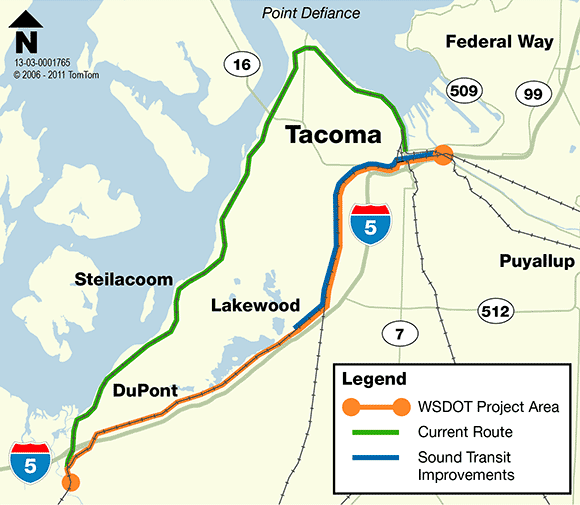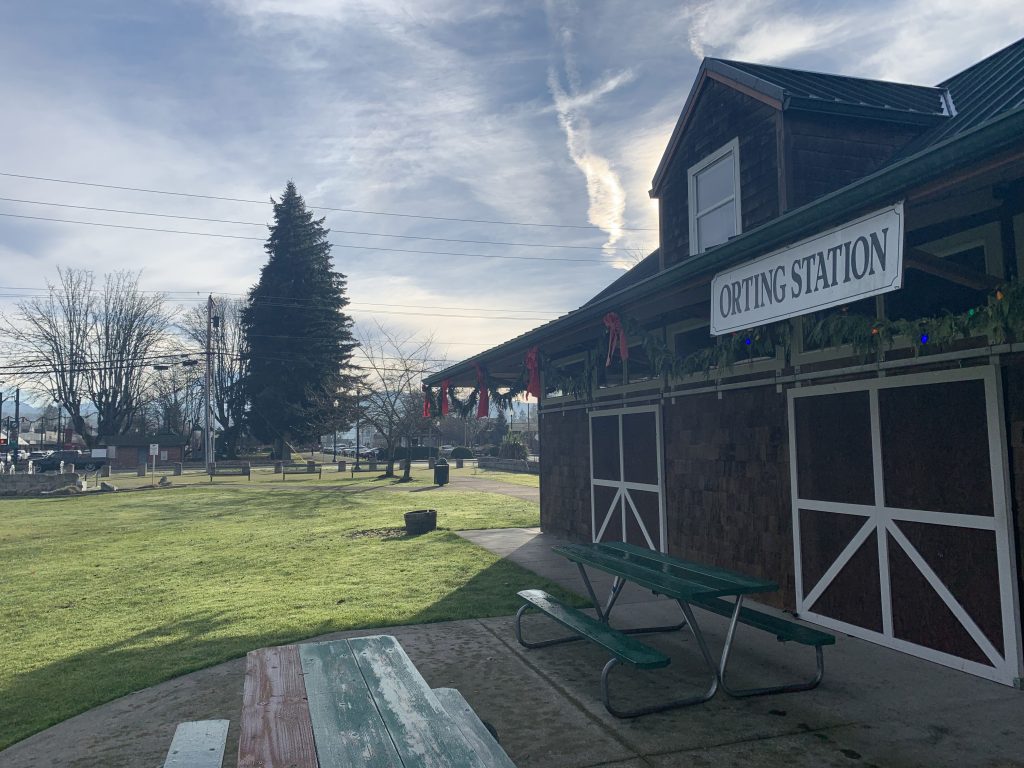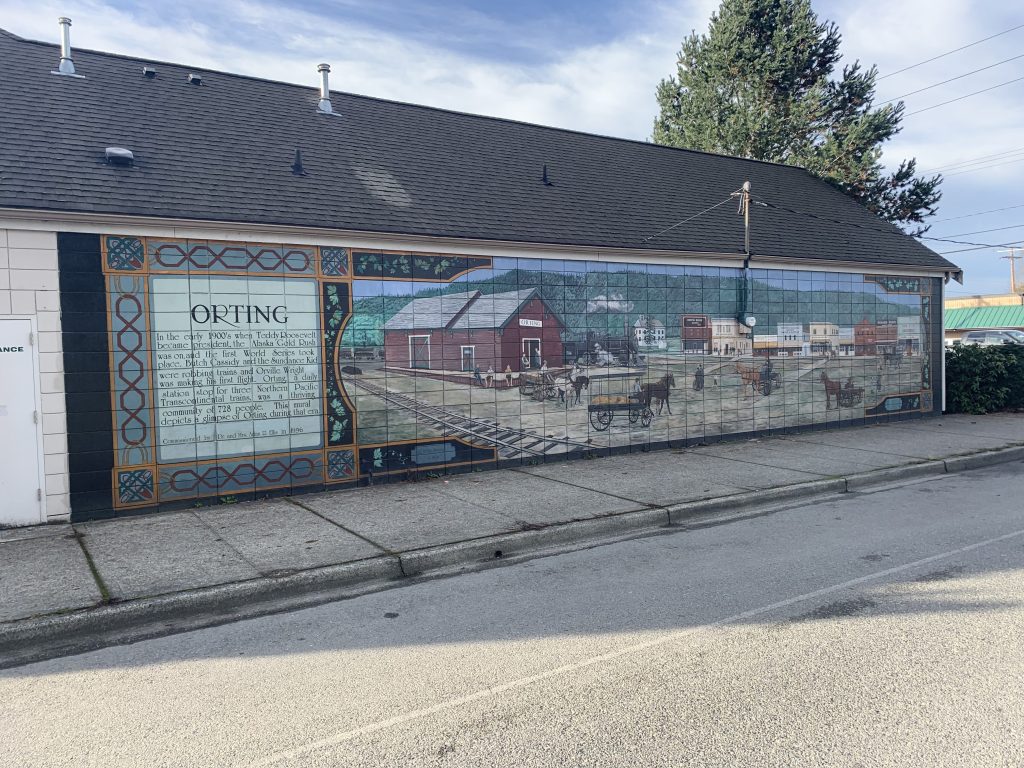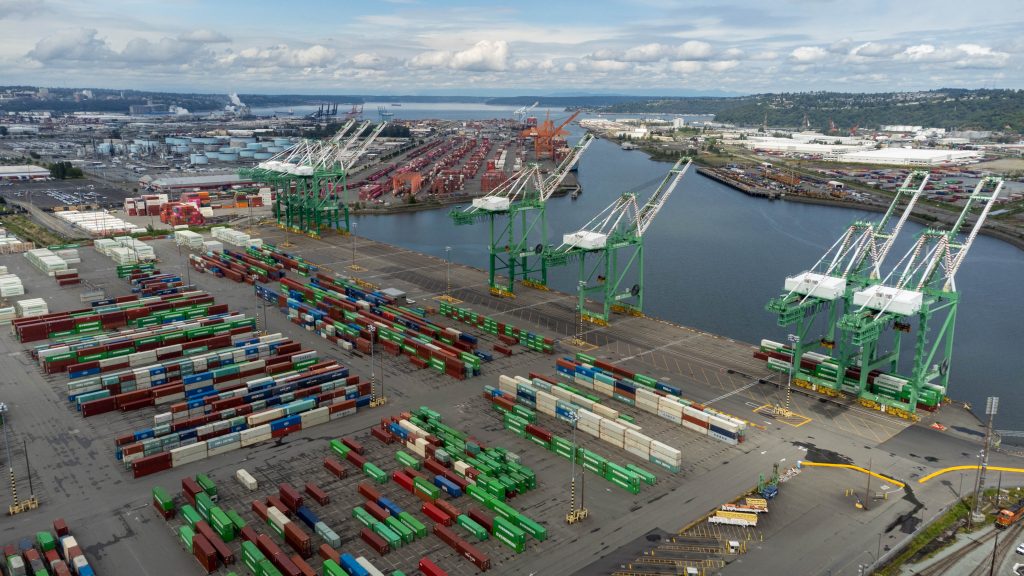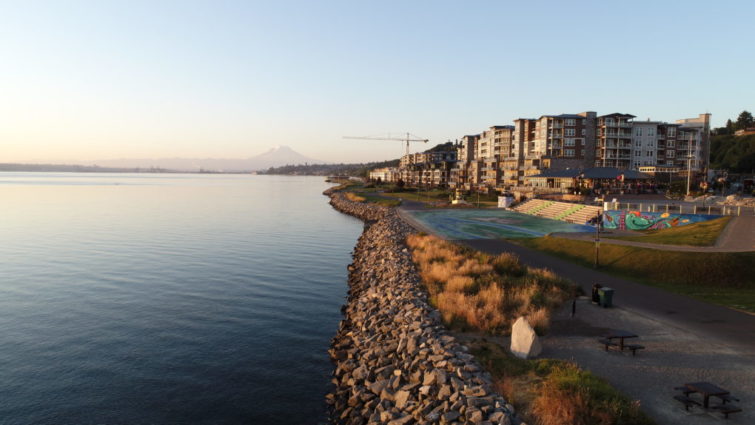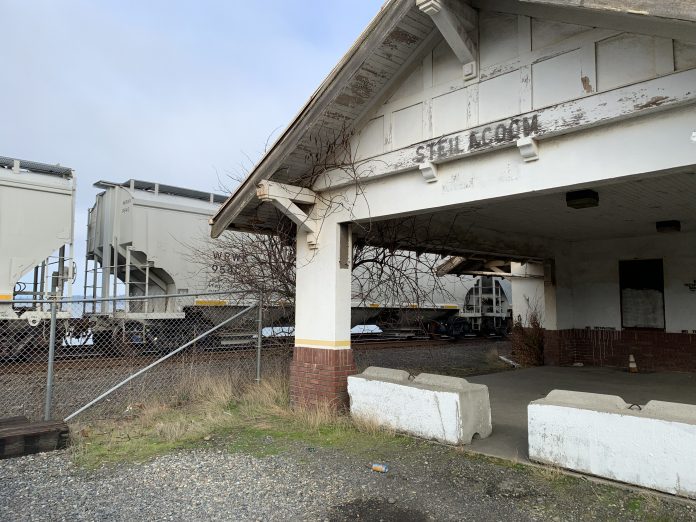
It’s no secret our region is lacking in heavy rail transit options. Our only existing service, Sounder, is operated in such a manner that it functionally excludes anyone who isn’t traveling into Downtown Seattle to work from 9 to 5. This is woefully inadequate to serve the South Sound, especially considering the significant employment centers of Downtown and the Port of Tacoma. Given Tacoma’s abundance of existing rail infrastructure there are a variety of potential passenger routes that could be developed quickly and cheaply relative to new light rail or even Pierce Transit’s proposed bus rapid transit (BRT) system while simultaneously feeding into and expanding the potential ridership for such planned systems. So, I considered the various railroads and their surrounding development that emanate from Tacoma and developed the following list of potential routes ordered by plausibility:
- Adding off-peak service on the Point Defiance Bypass to Dupont
- Off-peak service along Sounder and to Orting
- Passenger service to Frederickson on Tacoma Rail’s Mountain division
- A Point Defiance Waterfront line to Steilacoom
An important preliminary question to address is the nature of the rolling stock and who should operate it. Currently Sounder is operated by BNSF under an agreement with Sound Transit, and at its most basic form new passenger rail service would look like extra trips on the Sounder, making them an obvious contender. However, it’s worth noting the City of Tacoma could operate the service itself.
Historically, the city operated a passenger railroad as a commuter service for workers in the Port of Tacoma known as the Tacoma Municipal Belt Line. While the original TMBL passenger service no longer exists, the city still owns and operates its successor as a freight-switching service within the port known as Tacoma Rail. Because the city already owns an operating railroad that is fully compliant with the Federal Railroad Administration, a lot of the bureaucracy of creating a new operator or negotiations with an existing one could be sidestepped. Doing so could also be an easy way to make use of the city’s existing ownership and trackage rights over various local freight railroads.
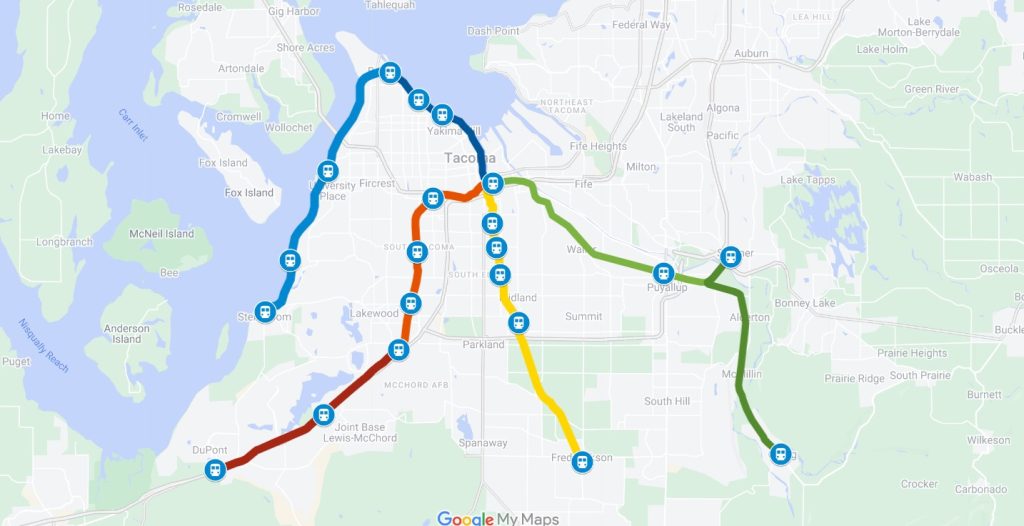
Optimally the passenger rail system would run all days of the week and feature 20 to 30 minute headways from 5am to 12pm, excepting time slots already served by Sounder if operated separately. Existing Sounder rolling stock could be used, theoretically by either potential operator, seeing as how Sounder train sets currently spend their off peak time sitting in a yard in Lakewood. However, if given the opportunity to purchase new rolling stock for this line, single story electric or diesel-electric multiple units may be a better fit for a system of this scale given their superior acceleration and on-/off-boarding times. Considering the available stock that already spends its day sitting in Lakewood, let’s begin by looking at the easiest route to implement.
Adding off-peak service on the Point Defiance Bypass
This alignment would run between Tacoma Dome Station and Lakewood Station along the Point Defiance Bypass. The corridor would be extremely easy to add service to since all of the infrastructure for passengers is already in place and the rails in question are already owned by Sound Transit and Tacoma Rail, with minimal freight traffic to interfere with passenger operations.
In its most basic form the line would feature three stops at the aforementioned termini, and at the South Tacoma Sounder station in between. A potential extension to Dupont, with an additional stop in Tillicum could be added, and is already part of Sound Transit’s long term plans for the Sounder South line. Construction of such an extension before Sound Transit’s timeline could save money on account of inflated construction and right-of-way acquisition costs over time. To create a more local service, infill stops could be added along the current route, with the main contenders being Lakewood’s International District and possibly a stop to serve industrial jobs in the Nalley Valley.
Despite the incredibly low barriers to creating this service, only requiring relatively minor funding for fuel, salaries, and maintenance to run the trains, some may question the value of such a line on its own, seeing as how Sounder South already provides commuter oriented service along this line that captures much of the potential ridership. It could be utilized as an alternative to Pierce Transit bus service to Lakewood, possibly augmenting the existing Route 3 by providing a direct end-to-end connection in a fraction of the time. However, without considering new construction or connections to a larger system, the easiest scenario does not provide any particularly strong transportation benefits, though I believe its incredibly low cost of implementation makes it worthwhile regardless.
Expanding the line to DuPont, however, does offer a more potent benefit, since there is no existing direct transit connection to Tacoma, the area deals with heavy traffic from JBLM, and the commercial core of Dupont is a fairly walkable area which adds another potential destination for retail trips other than Tacoma Dome and South Tacoma. Even with a Dupont extension, however, the potential for this line would remain unattained unless it is a component of a larger system given the high network value of the stations in the next route.
Off-peak service along Sounder and to Orting
This route would travel from Tacoma Dome Station to a new Station in Orting, with stops at Puyallup Station and Sumner Station along the way. This service would be a little more difficult to implement given that it would require some new construction, as well as an agreement with BNSF and the Meeker Southern Railroad to operate on their tracks. Most of the infrastructure is already in place since it would use existing Sounder Stations, however to reach the historically rail-oriented downtown of Orting an extension of the Meeker Southern would have to be reconstructed and their existing trackage would need to be rehabilitated. If construction of the Orting extension proves to be cost-prohibitive or politically infeasible then a truncated version ending in Sumner (or possibly Auburn) would still provide a significant improvement in regional rail transit.
This route makes the most sense of all of them in terms of independent viability, connecting four historically rail-oriented downtowns with significant commercial, population, and employment bases with a lot of existing demand. Some of this demand is already filled by Sounder, but the commuter only hours severely limit its usefulness, especially since it is mainly oriented around Seattle with minimal reverse-commute service from Sumner and Puyallup into Tacoma, in addition to missing any demand from Orting. If implemented it would logically through-run to South Tacoma and Lakewood given that the only barrier to implementing the aforementioned Lakewood service would also be solved by this service, creating an efficient higher order transit connection between the three largest cities in Pierce County.
Passenger service to Frederickson on Tacoma Rail’s Mountain division
The Mountain Division of Tacoma Rail is a railroad stretching from Tacoma to Morton with a branch line to the Roy/Yelm area and a spur from Elbe to Mineral currently leased by Mount Rainier Scenic Railroad. There are enough possibilities for this alignment to warrant an entire article of its own, but the most obviously useful route I’m going to explore here would be the portion between Tacoma and Frederickson. This alignment would start at Tacoma Dome Station, heading to the Southeast with various potential stops throughout Tacoma’s Eastside, most notably at the Stewart Heights park. It would then roughly parallel Portland Avenue to a stop in Midland, a small unincorporated town just outside of Tacoma, then travel southeast to another stop near 176th Street and Canyon Road in Frederickson, a major industrial center experiencing rapid residential and commercial development.
This would create a very effective connection between Downtown Tacoma, Tacoma’s Eastside, and a variety of Industrial jobs both in Frederickson and to a lesser extent in the Port of Tacoma. At Downtown Tacoma it would allow riders to transfer to the existing Sounder commuter rail connecting to Seattle, or (if implemented) the previously mentioned Lakewood and/or Orting lines.
The viability of this line’s construction and operation would be influenced by the choice of transit operator. Tacoma Rail could theoretically start construction tomorrow and begin operation without any outside influence besides permitting. Sound Transit working in conjunction with Tacoma rail would introduce more bureaucracy to the process but probably create a more integrated heavy rail system as an end product. In terms of construction, every station except for Tacoma Dome Station would have to be built from scratch, and new siding track may have to be added depending upon anticipated headways. The exact location of these stations and sidings may require the exercise of eminent domain.
Point Defiance Waterfront line
This service would run on the freight tracks along the Tacoma Waterfront. The most obvious route would be to connect the new Point Ruston development to Downtown Tacoma, with stops in between to serve the Waterfront Parks and one in Old Town Tacoma. An extension to Steilacoom is feasible, stopping near the Anderson Island ferry where the original Steilacoom station house still stands, with possible intermediary stops at Titlow Park and Chambers Bay.
Old Town was historically a commercial center along a streetcar line with decent remaining density, and Point Ruston is a new mixed condo/commercial development, both of which could benefit from a direct transit connection to Downtown. The Point Ruston stop would also provide access to the City of Ruston, Point Defiance Park, and the Vashon ferry. Looking further west, Steilacoom has a similar historically dense character to Old Town Tacoma and is relatively isolated from the rest of the County by road. It also features the Anderson Island Ferry.
Connecting the two Ferries to Downtown Tacoma could be a valuable service, allowing people to leave their vehicles behind and not worry about traffic while simultaneously reducing traffic in Tacoma. Furthermore, Point Ruston is a significant retail destination with a high population density that would benefit from a meaningful transit connection. This line would be undeniably of the highest value to tourists specifically, given its excellent views of the Puget Sound and the access to Tacoma’s main waterfront on Ruston Way, which currently lacks a fixed transit connection to Downtown.
As for actually building and operating it, this route would be by far the most difficult. The most significant issue I foresee would be the capacity constraint posed by the Ruston Tunnel, which is the only spot on the line that’s single tracked and is already a significant strain on freight rail capacity before factoring in new passenger service. Double tracking and expanding the clearance through the Tunnel would be expensive, but could also be a major component of an agreement with BNSF and Union Pacific to operate on the line. It’s very feasible they would significantly discount the trackage rights in exchange for public investment in a new tunnel.
Another major piece of infrastructure to contend with would be access to Tacoma Dome Station. One could forgo access to the station directly in favor of reactivating the old Amtrak station, but direct access would either require a time consuming route through the various rail junctions in and around Tacoma Yard or the construction of a new line from the freight railroad into the west end of Tacoma Dome station. Besides these two major infrastructure obstacles, new stations would have to be constructed at all the stops and an agreement would have to be made with the freight railroads to operate over their tracks, which could prove difficult given existing freight congestion through the corridor.
Unfortunately, I don’t have the insight into railroad trackage agreements to properly calculate the cost of these extensions, but it’s safe to say by utilizing existing infrastructure they would be significantly cheaper to implement than any new-construction rail alternatives. The system I’ve presented would be a relatively inexpensive means of creating high quality rail transit connections between a variety of Pierce County communities, many of which featured identical connections historically. In doing so it could eliminate many potential automobile trips which would reduce congestion and air pollution, in addition to creating a meaningful alternative for those who can’t drive because of financial constraint, disability, or impairment. This is the regional rail Pierce County deserves.

Jeremiah Thomas (Guest Contributor)
Jeremiah Thomas is a resident of Downtown Tacoma with a deep interest in improving the region’s urban form and walkability. He works as a Union Concrete Carpenter and is excited by the opportunities to actively participate in building a better landscape. As a regular transit rider, his proudest work has been for Sound Transit's subcontractors, most prominently including the concrete staircases for the new Judkin’s Park station.

